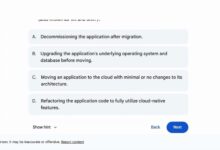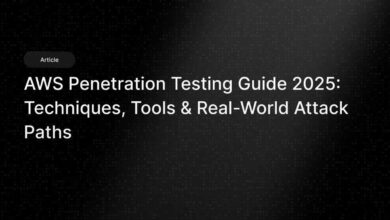aws status: 7 Shocking Truths You Need to Know Now
Ever wondered why your app suddenly crashes or your website goes dark? The answer might be hiding in plain sight—on the AWS Status page. Let’s uncover what you’re missing.
What Is AWS Status and Why It Matters

The term aws status refers to the real-time health and performance updates of Amazon Web Services (AWS), the world’s most widely adopted cloud platform. With millions of businesses relying on AWS for mission-critical operations, staying informed about its operational state isn’t just helpful—it’s essential.
When AWS experiences outages, performance degradation, or scheduled maintenance, these events are documented and communicated through the AWS Service Health Dashboard. This public-facing tool allows users to monitor service availability across global regions and specific AWS offerings like EC2, S3, Lambda, and RDS.
Understanding the AWS Service Health Dashboard
The AWS Service Health Dashboard is the primary source for checking aws status. Unlike general cloud news or third-party monitoring tools, this dashboard provides official, verified updates directly from Amazon.
- Each service has its own row with color-coded indicators: green for normal operation, yellow for issues, and red for outages.
- Updates include timestamps, incident descriptions, and resolution progress.
- Users can subscribe to RSS feeds or set up email/SMS alerts via Amazon SNS.
This dashboard is not just a status board—it’s a lifeline for DevOps teams, system administrators, and CTOs who need to respond quickly to disruptions.
How AWS Status Impacts Your Business
A single AWS outage can ripple across industries. In 2021, a major US-East-1 region failure disrupted services like Slack, Atlassian, and even parts of the IRS. That’s the power—and risk—of cloud dependency.
When aws status shows an outage, downstream effects include:
- Website downtime leading to lost revenue
- Failed transactions and customer dissatisfaction
- Delayed data processing and analytics
- Increased load on backup systems or on-prem infrastructure
“When AWS sneezes, the internet catches a cold.” — Tech Analyst, 2023
Therefore, integrating aws status monitoring into your incident response plan isn’t optional—it’s a business continuity imperative.
How to Monitor AWS Status in Real Time
Proactively tracking aws status enables faster response times and minimizes downtime impact. There are several effective methods to stay ahead of potential disruptions.
Whether you’re a developer, IT manager, or C-suite executive, knowing how to monitor AWS health gives you a strategic advantage. Let’s explore the most reliable tools and techniques.
Using the Official AWS Status Dashboard
The AWS Status Dashboard is the gold standard for real-time updates. It’s updated continuously by AWS operations teams during incidents.
- Access is free and requires no login.
- Services are grouped by region and function (e.g., Compute, Storage, Networking).
- Historical incident data is archived for post-mortem analysis.
Tip: Bookmark the dashboard and configure browser notifications so you’re alerted the moment a service turns yellow or red.
Setting Up AWS Health Events with Amazon SNS
For automated monitoring, AWS offers the AWS Health API integrated with Amazon Simple Notification Service (SNS). This allows you to receive push notifications when there’s a change in aws status.
Steps to set up:
- Create an SNS topic in your AWS account.
- Subscribe your email, SMS, or webhook endpoint to the topic.
- Use AWS Health API or AWS Console to filter events by service, region, or severity.
- Integrate with Slack or PagerDuty for team-wide alerts.
This method ensures you’re not relying solely on manual checks—you get instant, personalized alerts.
Third-Party Monitoring Tools for AWS Status
Beyond AWS’s native tools, several third-party platforms provide enhanced visibility into aws status, often with better UX and alerting logic.
- Datadog: Offers cloud infrastructure monitoring with AWS Health integration.
- Pingdom: Tracks uptime and correlates external performance with AWS internal status.
- Statuspage.io: Used by many companies to mirror AWS status updates for internal stakeholders.
- UptimeRobot: Free tier available for small teams needing basic AWS service checks.
These tools often add context—like performance trends or geographic impact—that the official dashboard doesn’t show.
Decoding AWS Status Incident Types
Not all AWS status updates are created equal. Understanding the different types of incidents helps you assess risk and respond appropriately.
The AWS Health Dashboard categorizes events into several types, each with varying levels of severity and scope. Knowing the difference can prevent panic over minor issues—or help you act fast during critical ones.
Service Disruptions and Outages
A service disruption occurs when an AWS service is partially or fully unavailable. These are marked as “Impaired Service” or “Service Disruption” on the dashboard.
- Example: EC2 instances in us-west-2 fail to launch.
- Impact: High—can halt deployments, scale-out operations, or auto-healing.
- Response: Check if your workloads are region-dependent; consider failover strategies.
During such events, AWS typically provides regular updates every 30–60 minutes until resolution.
Performance Degradation
Sometimes, a service is still “up” but performing poorly. This is labeled as “Performance Degradation” in aws status.
- Example: S3 GET requests taking 5x longer than usual.
- Impact: Medium—users may experience lag, timeouts, or retries.
- Response: Optimize retry logic, increase timeouts, or route traffic elsewhere.
These incidents are often harder to detect because monitoring tools may still report “up” status despite poor user experience.
Scheduled Maintenance and Changes
AWS occasionally performs planned maintenance on infrastructure. These are announced under “Planned Changes” in the aws status feed.
- Example: Network upgrades in ap-southeast-1 requiring brief reboots.
- Impact: Low to moderate—usually short-lived and optional to act on.
- Response: Review maintenance window; reschedule if it conflicts with peak usage.
Unlike outages, these are proactive communications meant to help customers prepare.
Historical AWS Outages: Lessons Learned
Looking back at major aws status incidents reveals patterns in failure causes and response effectiveness. These case studies offer valuable lessons for cloud architects and business leaders.
By analyzing past outages, organizations can improve resilience, refine disaster recovery plans, and better interpret future aws status alerts.
2017 S3 Outage: The $150M Mistake
On February 28, 2017, a simple typo during a debugging session caused a massive S3 outage in the US-East-1 region. A command intended to remove a small number of servers accidentally took a large cluster offline.
- Duration: ~4 hours
- Impact: Thousands of websites and apps went down, including Trello, Slack, and Quora.
- Financial loss: Estimated at $150 million across affected businesses.
AWS’s post-mortem revealed that the issue stemmed from a lack of safeguards in the S3 billing system’s subsystem. Since then, AWS has implemented stricter change controls and isolation protocols.
“This was not a failure of the cloud—it was a failure of process.” — AWS Post-Mortem Report
2021 US-East-1 Power Failure
In December 2021, a power disruption at a data center in Northern Virginia triggered a cascading failure across multiple availability zones.
- Cause: Backup generators failed to activate properly.
- Services affected: EC2, RDS, Lambda, CloudFront.
- Recovery time: Over 8 hours for full restoration.
The incident highlighted the risks of regional concentration. Many companies had all their resources in us-east-1 for latency reasons, making them vulnerable.
Key takeaway: Even AWS isn’t immune to physical infrastructure failures. Multi-region architectures are no longer optional for critical systems.
2023 CloudFront & Route 53 DNS Outage
In March 2023, a configuration error in AWS’s global DNS system caused widespread resolution failures.
- Impact: Users couldn’t reach domains using Route 53 or CloudFront.
- Geographic spread: Global, lasting ~2.5 hours.
- Symptoms: “Server not found” errors despite local internet working.
This incident underscored the fragility of DNS dependencies. Companies using external DNS providers (like Cloudflare) were unaffected, suggesting diversification helps.
Since then, AWS has improved its DNS change validation pipeline and added automated rollback mechanisms.
Best Practices for Responding to AWS Status Alerts
When the aws status dashboard turns red, your response can mean the difference between minutes of downtime and hours of chaos. Having a structured incident response plan is crucial.
Here’s how top engineering teams handle AWS status alerts with precision and speed.
Immediate Actions During an Outage
When you see a red alert on the aws status page, act fast but stay calm. Follow these steps:
- Verify the scope: Is it your region? Your service? Check the dashboard details.
- Pause non-critical deployments: Avoid adding variables during instability.
- Notify stakeholders: Use internal comms channels to inform teams and customers.
- Check your monitoring: Correlate AWS status with your own metrics (latency, error rates).
Do not attempt to scale up resources blindly—this can worsen the situation if the underlying service is down.
Leveraging Multi-Region and Multi-Cloud Strategies
One of the most effective defenses against AWS status issues is architectural resilience.
- Deploy critical workloads across multiple AWS regions (e.g., us-east-1 and eu-west-1).
- Use Route 53 failover routing to redirect traffic during outages.
- Consider a hybrid or multi-cloud setup (e.g., AWS + Google Cloud or Azure) for mission-critical apps.
While multi-cloud adds complexity, it reduces vendor lock-in and increases uptime guarantees.
Conducting Post-Incident Reviews
After an AWS status event resolves, don’t just move on. Conduct a post-mortem to learn and improve.
- Document what happened, how you responded, and what worked or didn’t.
- Analyze whether your monitoring caught the issue early enough.
- Update runbooks and incident playbooks based on findings.
- Share lessons internally to build organizational knowledge.
Many companies use tools like Jira Service Management or Blameless to formalize this process.
How AWS Status Affects SLAs and Customer Trust
Service Level Agreements (SLAs) are contractual promises between AWS and its customers. The aws status directly influences whether these SLAs are met—and whether you can claim service credits.
Understanding the link between status events and SLAs helps you manage expectations and financial risks.
SLA Terms and Uptime Guarantees
AWS offers SLAs for most services, typically guaranteeing 99.9% to 99.99% monthly uptime.
- Example: Amazon S3 Standard offers 99.9% availability SLA.
- If uptime drops below this threshold due to an AWS fault, customers may qualify for service credits.
- Credits range from 10% to 100% of the monthly fee, depending on downtime severity.
However, SLAs only cover unplanned downtime—not issues caused by customer misconfiguration.
Claiming Service Credits After AWS Outages
If your service was impacted by a verified aws status incident, you can request a credit.
- Visit the AWS Service Credits page in your account.
- Select the affected service and month.
- Follow the prompts—AWS often auto-approves claims for major outages.
- Credits are applied to your next invoice.
Note: You usually have up to 14 days to file a claim after the end of the billing month.
Customer Communication During AWS Downtime
When AWS goes down, your customers may still blame *you*. Transparent communication is key.
- Post updates on your status page (e.g., using Statuspage.io).
- Link to the official AWS status incident for credibility.
- Acknowledge the issue, provide estimated resolution time (if known), and apologize.
Companies that communicate proactively maintain trust, even during third-party outages.
Future of AWS Status Monitoring: AI and Predictive Analytics
The next generation of aws status monitoring isn’t just about reacting—it’s about predicting. AWS and third-party vendors are leveraging AI to anticipate issues before they occur.
Here’s how machine learning is transforming cloud health visibility.
AWS DevOps Guru and Proactive Insights
AWS DevOps Guru uses machine learning to analyze operational data and detect anomalies before they become outages.
- It monitors logs, metrics, and events across your environment.
- Flags unusual patterns (e.g., sudden spike in Lambda errors).
- Can correlate with known aws status trends to predict regional risks.
While not a replacement for the status dashboard, it adds a predictive layer to your monitoring stack.
AI-Powered Alert Triage and Noise Reduction
One challenge with aws status monitoring is alert fatigue. Too many notifications lead to missed critical ones.
- Tools like BigPanda and Moogsoft use AI to group related alerts.
- They suppress low-priority noise and escalate only actionable incidents.
- Some can even auto-resolve common issues using runbook automation.
This reduces mean time to detection (MTTD) and improves incident response efficiency.
Integration with AIOps and Observability Platforms
The future lies in unified observability—combining logs, metrics, traces, and status data into a single pane of glass.
- Platforms like New Relic, Datadog, and Lightstep now ingest AWS Health events.
- They overlay aws status data on top of your application performance.
- This helps distinguish between infrastructure issues and application bugs.
As AI matures, expect these systems to not only detect but also suggest remediation steps.
What is the AWS Status Dashboard?
The AWS Status Dashboard is a public, real-time monitoring page that displays the operational health of all AWS services across global regions. It uses color-coded indicators to show normal operations (green), issues (yellow), and outages (red). You can access it at https://status.aws.com.
How do I get notified about AWS outages?
You can receive notifications by subscribing to the AWS Status RSS feed, setting up Amazon SNS alerts through the AWS Health API, or using third-party tools like Datadog, Pingdom, or Statuspage.io that integrate with AWS Health events.
Does AWS provide compensation for outages?
Yes, AWS offers service credits if a service fails to meet its Service Level Agreement (SLA) due to unplanned downtime. Customers can file a claim in their AWS account under the Service Credits section, usually within 14 days after the billing month ends.
Can I rely solely on AWS Status for monitoring?
While the AWS Status Dashboard is authoritative, it should be part of a broader monitoring strategy. Combine it with your own observability tools, synthetic monitoring, and alerting systems to get a complete picture of your application’s health.
What should I do during an AWS outage?
First, verify the scope of the issue on the AWS Status Dashboard. Pause non-critical operations, notify your team and customers, and check your own monitoring systems. If you have multi-region or failover systems, initiate your disaster recovery plan. Avoid making configuration changes during the outage unless absolutely necessary.
Understanding aws status is no longer optional for businesses running on AWS. From real-time monitoring to post-incident reviews, staying informed protects your uptime, reputation, and bottom line. By leveraging official tools, third-party integrations, and resilient architectures, you can turn AWS status alerts from threats into manageable events. The cloud is powerful—but only as reliable as your ability to respond when it stumbles.
Recommended for you 👇
Further Reading:









